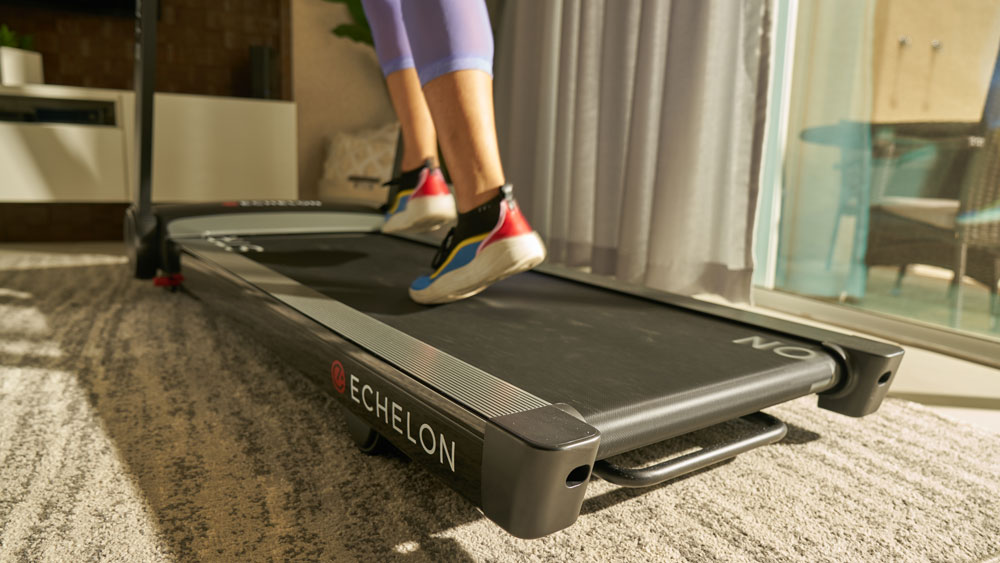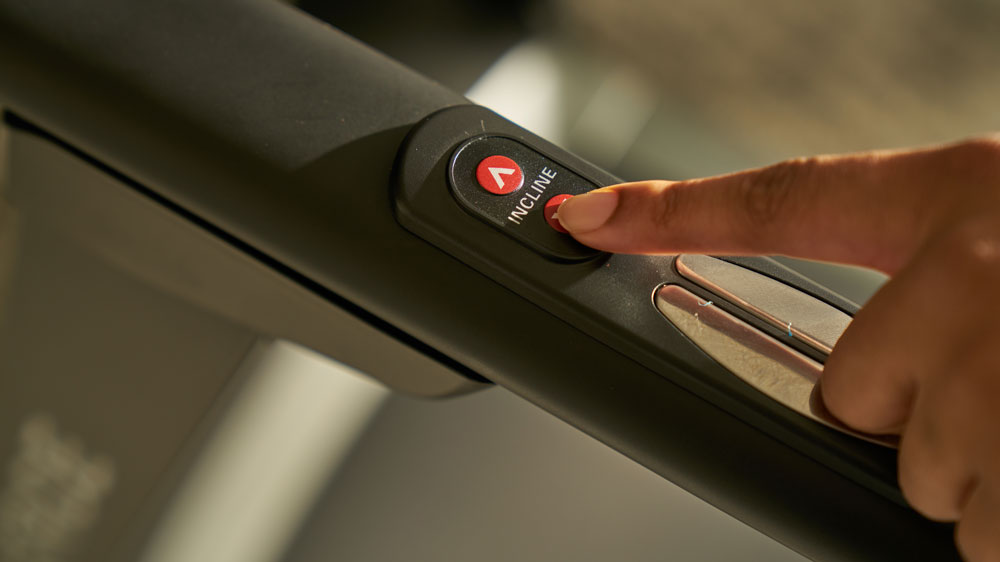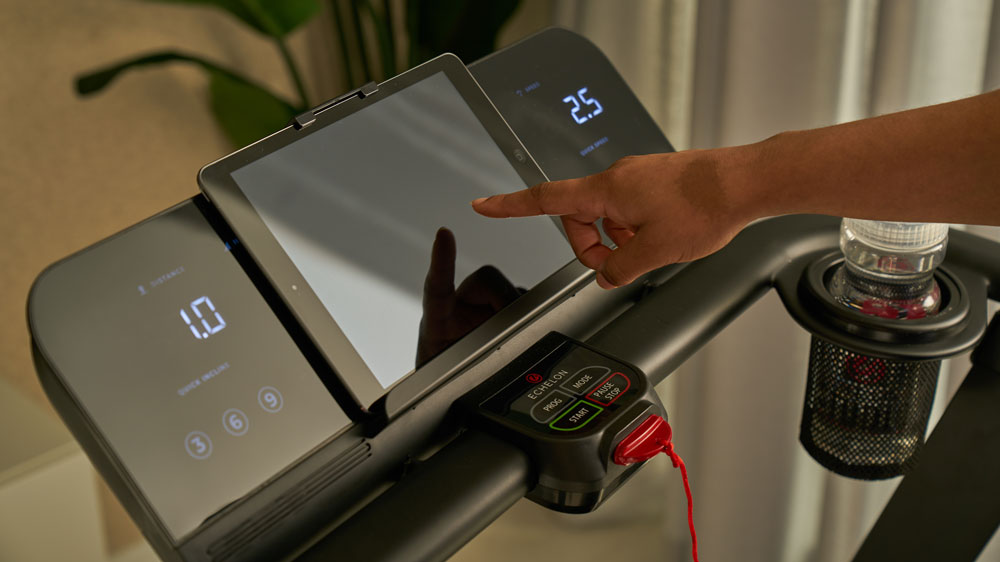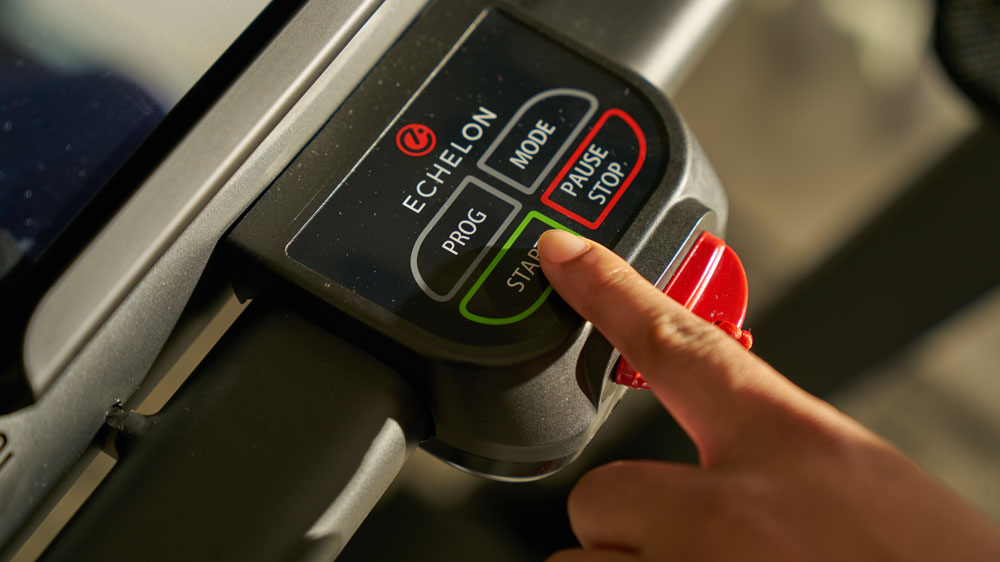Our Verdict
The Echelon Stride is easy to store and the guided workouts in the parent app are enjoyable, but it’s too expensive given that you can get similar or better performance from machines that cost well under £1,000.
For
- Folds down flat
- Partner app with guided workouts
Against
- No built-in screen
- Poor specs for price
- Subscription is expensive
You can trust Coach
A home treadmill is a substantial investment and many are put off by the worry that they’ll stop using it after a time. One counterintuitive solution is to spend more money by buying a smart treadmill like the Echelon Stride and subscribe to the partner app (£39.99 a month on a rolling contract in this case) with a wealth of guided running classes. The benefits of having an on-screen instructor talking you through your runs are considerable, providing both motivation and an effective workout so you can be sure your time on the treadmill is well spent.
The Echelon Stride is one of the best connected treadmill options, partly because it’s pretty good, but also partly because there aren’t that many options. There is the excellent Peloton Tread but it is very expensive.
However, at £1,599 the Stride is very expensive given the specs it offers, and that’s before you get to the continuing subscription costs. Whether or not it’s worth that price will depend on your affinity for the guided workouts in the Echelon app and how much space you have for a treadmill in your home.
Design
The Echelon Stride is a light treadmill at 70.8kg and as a result it’s easy to put together, aided in that regard by its relatively small size. Its diminutive nature has its drawbacks too, however. It feels slightly flimsy at times and when changing the incline level during a run, the Stride would get a little jittery until it reached the new level.
The small size is also achieved by reducing the size of the running belt to 50.8cm wide by 139.7cm long. That’s one of the shorter running belts I’ve come across in treadmills at this price – a length of over 150cm is standard. That said, I’m 183cm tall and did not have any problems with it, even when running at close to its 19.3km/h top speed. I should say that I have a fairly short stride length for my height, so some taller runners may have to adjust their style a little on the Stride.

The Stride’s incline range has 12 levels and goes up to a maximum of 10%. You can adjust both the speed and the inline using controls on the sides of the machine as well as with quick presets on the main console itself.

That main console is sleek and features an adjustable tablet/smartphone holder – the Stride doesn’t have a built-in screen so you need to link a device up to the treadmill to use the guided workouts in the app. It’s worth noting that this tablet holder is positioned in such a way that my device got showered in sweat throughout every run, which was a little concerning at times.
Sign up for workout ideas, training advice, reviews of the latest gear and more.

There are two water bottle holders on the console, and you also get a phone stand you can push into one of the holders. Make sure this is something you’ll use a lot before you insert it, because it’s so firmly in place on the machine I tested that I’m unsure if it’ll ever come out again.
It’s possible, of course, to use the Stride treadmill without the partner app. One reason you might want to (aside from cost) is that the Echelon app can evidently only show distance and pace in imperial units, while the treadmill itself has all its stats in metric. Odd.
One distinguishing feature of the Stride is how easy it is to fold up and store. The arms and console fold down automatically at the press of a button, and once folded it’s just 26cm thick so you can slide it under a bed. It’s also light enough that you can easily lift it to stand on its end, leaning against a wall.

However, I did not feel comfortable leaving it against a wall without securing it with the straps provided, since it did seem as if it could tip over at the lightest touch. If you are planning on storing it upright you’ll need to do it somewhere you’re happy to attach straps to the wall.
Running Performance
Compared with other treadmills around its price, the Echelon Stride’s motor is underpowered at 1.75CHP. I did find it still ran smoothly even when doing longer reps near the top speed, but long-term performance might be a concern, and it’s a little disappointing that there isn’t a beefier motor in place.
The treadmill connects to the Echelon app quickly and reliably and reacts fairly rapidly to alter your on-screen stats after you manually adjust them on the treadmill. In the app you’ll find a wide range of guided classes, along with a small selection of scenic runs, where a video of a glamorous location plays while you run. Glamorous in comparison with the garage I was actually running in, anyway.
Along with the library of on-demand workouts there are live classes to join throughout the day. Each type of class has a leaderboard with participants ranked by output, a measure of your effort based on the speed and incline the treadmill is set on. If you do a live class the leaderboard creates more of a communal feel, and I found even on-demand classes did just enough to fire up my competitive nature to push a little harder.

You can filter the classes by length, instructor, genre of music and type. The type filter is almost useless since it includes every kind of class on the Echelon app, including the likes of yoga, cycling and Pilates, and the many types there are not listed alphabetically. So even though there are different kinds of runs and walks you can do, it’s easier to just scroll through the classes section of the app to find the one you’re after than try to filter by type.
Most of the classes are variations on an intervals theme, with stints of higher effort broken up by slower jogging or walking. There are enough different instructors that you’re sure to find one you like, and the sessions do a good job of burning calories and improving your fitness. They range in length from five to 45 minutes, and there are a lot of hill sessions that focus more on incline than simply ramping up the speed.
I’m probably not the typical Echelon user as a very keen runner who normally follows a structured training plan and runs six times a week, usually for at least an hour at a time. However, I did enjoy the sessions I did, even if they don’t follow a typical format for the kind of interval and track workouts I do.

The sessions would be of more use for someone who is looking to do two or three runs a week to get fit and lose weight, and wouldn’t be looking for extra-long sessions to prepare for a marathon or similar.
One thing you can’t do with the Stride is connect it to other apps via Bluetooth, which is disappointing. It’s locked into the Echelon app and while you can get around this using third-party solutions, it would be good if you could link it directly to something like Zwift since it clearly has the necessary hardware to do so.
Verdict
Given its modest specs the Echelon Stride did surprise me with how good its level of performance was. Even when pushing the pace up to 18 or 19km/h the belt ran smoothly and I didn’t have any problems with its relatively short length.
The small size of the machine when folded is also a huge advantage, especially as it is light enough to manoeuvre around easily. This is certainly a key selling point for the Stride, since it is smaller and less intrusive than most treadmills.
However, if you have room to handle any treadmill, the Stride is worth buying only if you are confident the Echelon app is right for you. You can use the Stride as a normal treadmill, but you can get better machines for the same price or even far less – the superior JTX Sprint-7 is under £1,000, for example, while the NordicTrack S 45i is £1,499 and even has a built-in screen for guided classes through iFit.
The Echelon classes are engaging and will help you to keep using the treadmill, but the cost of £39.99 a month is very high. You can reduce the overall cost by signing up to a one or two-year contract, but then you have to pay for the duration of that period upfront – £399.90 for one year or £599.85 for two. Delivery also costs £99.99, unless you take out a one- or two-year membership from the start. If you are keen on guided classes in general, you can find them through other apps like Kinomap or iFit and use a cheaper treadmill, some of which will link to the apps directly.
Overall, while I enjoyed using the Echelon Stride even as someone who doesn’t tend to use guided classes, the price is a little too high for what you’re getting with this machine.
Buy from Echelon | £1,599, plus £39.99 monthly subscription

Nick Harris-Fry is a journalist who has been covering health and fitness since 2015. Nick is an avid runner, covering 70-110km a week, which gives him ample opportunity to test a wide range of running shoes and running gear. He is also the chief tester for fitness trackers and running watches, treadmills and exercise bikes, and workout headphones.

